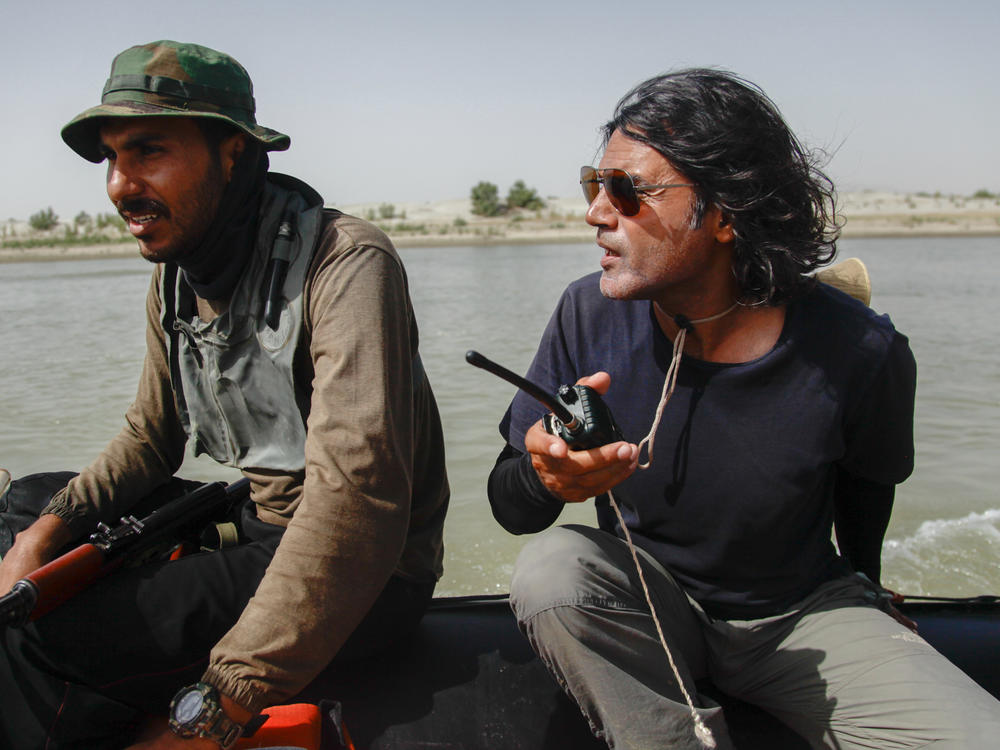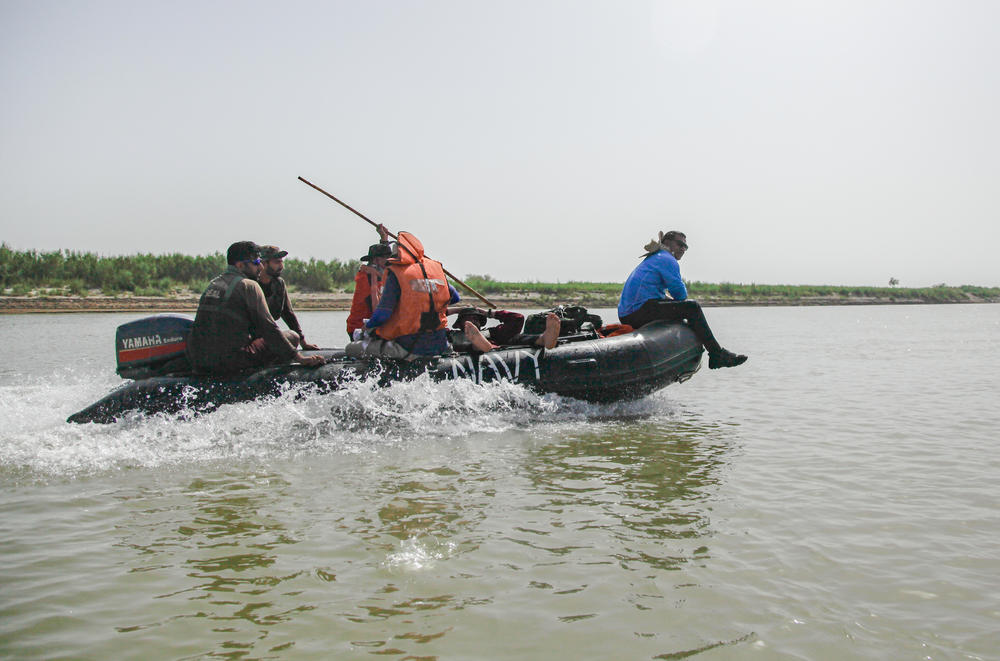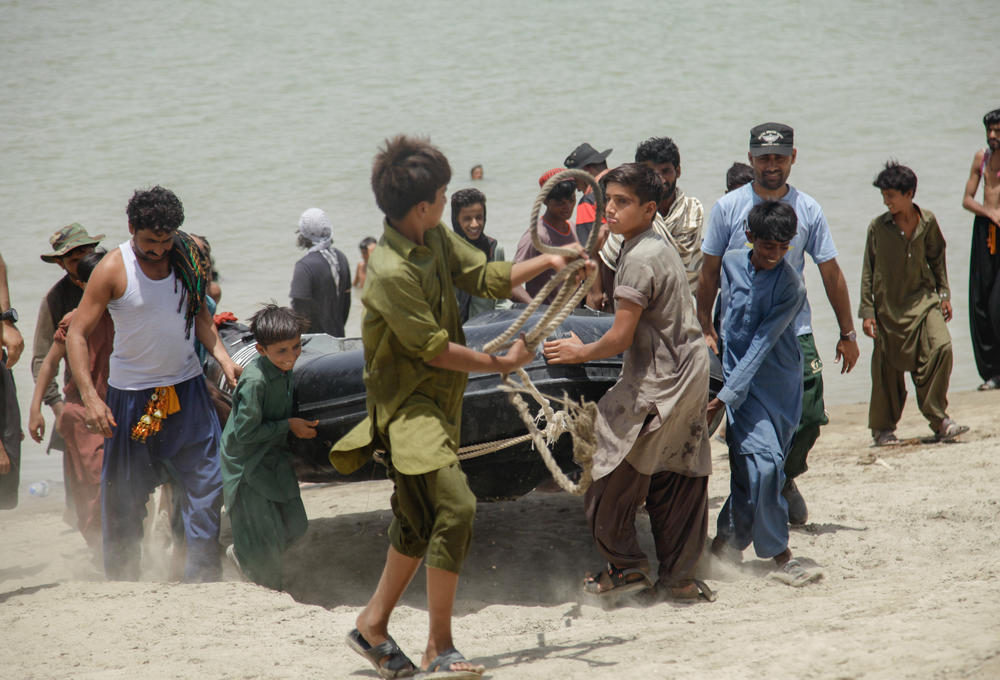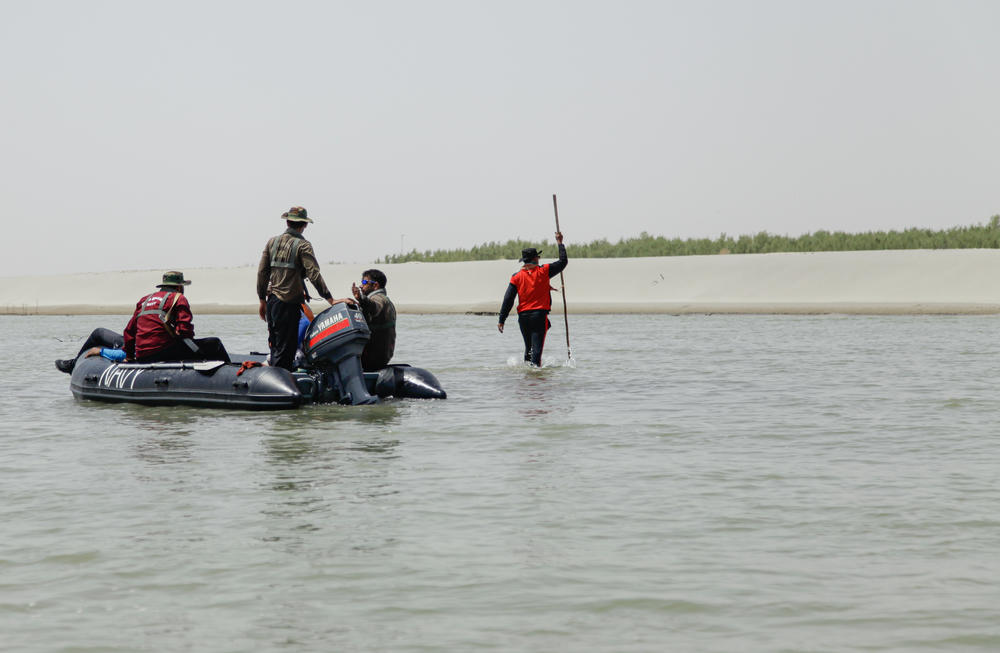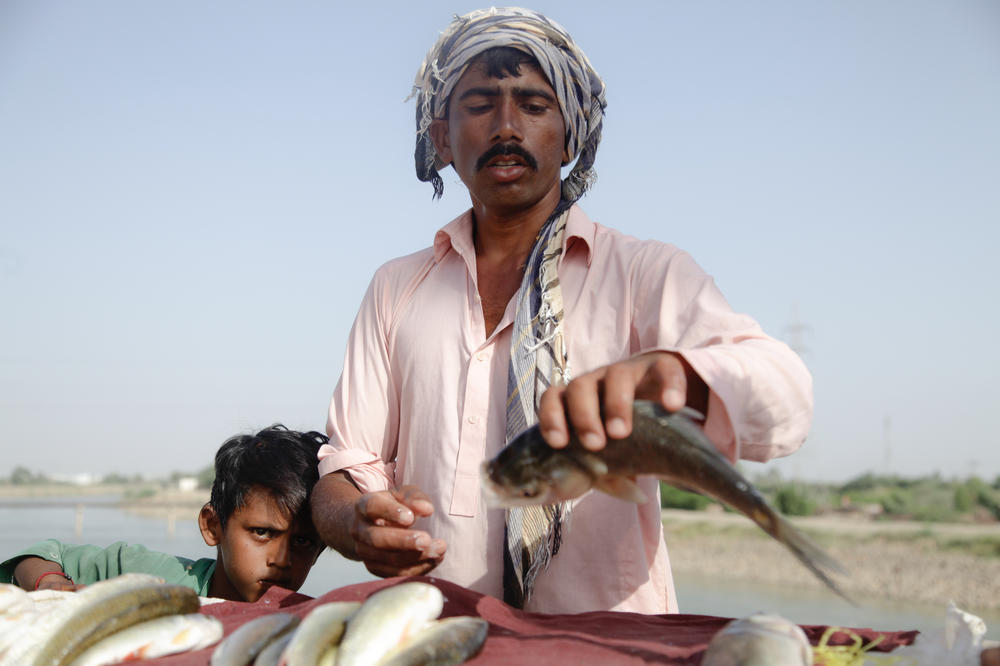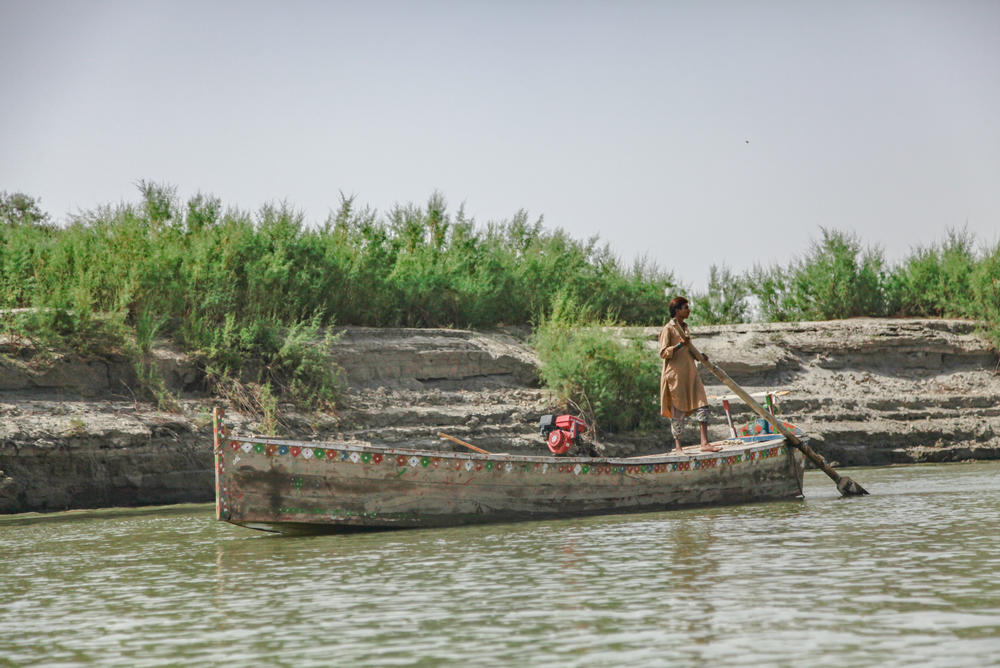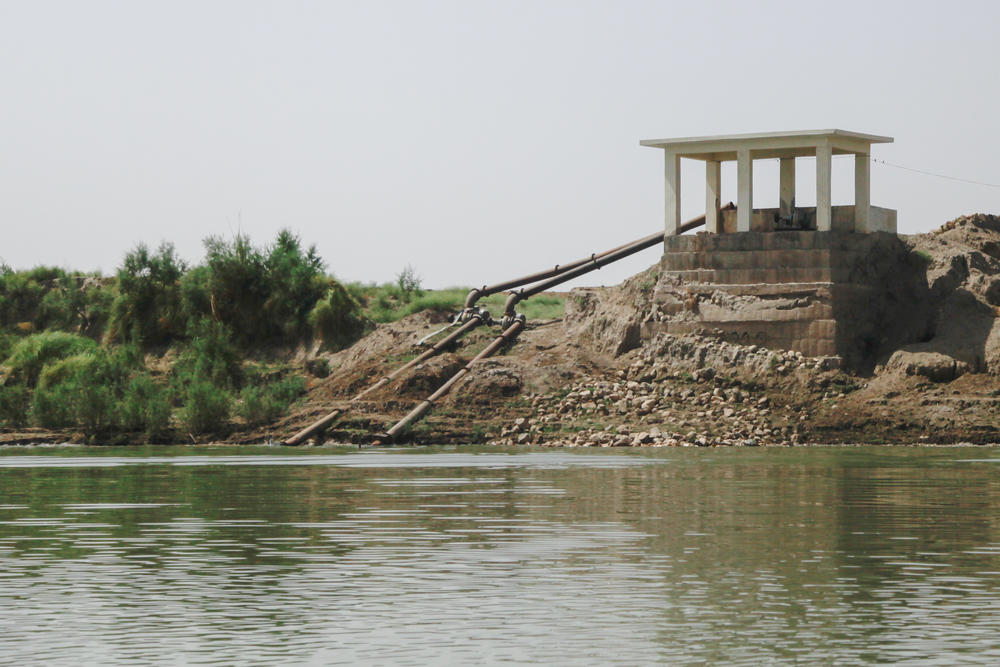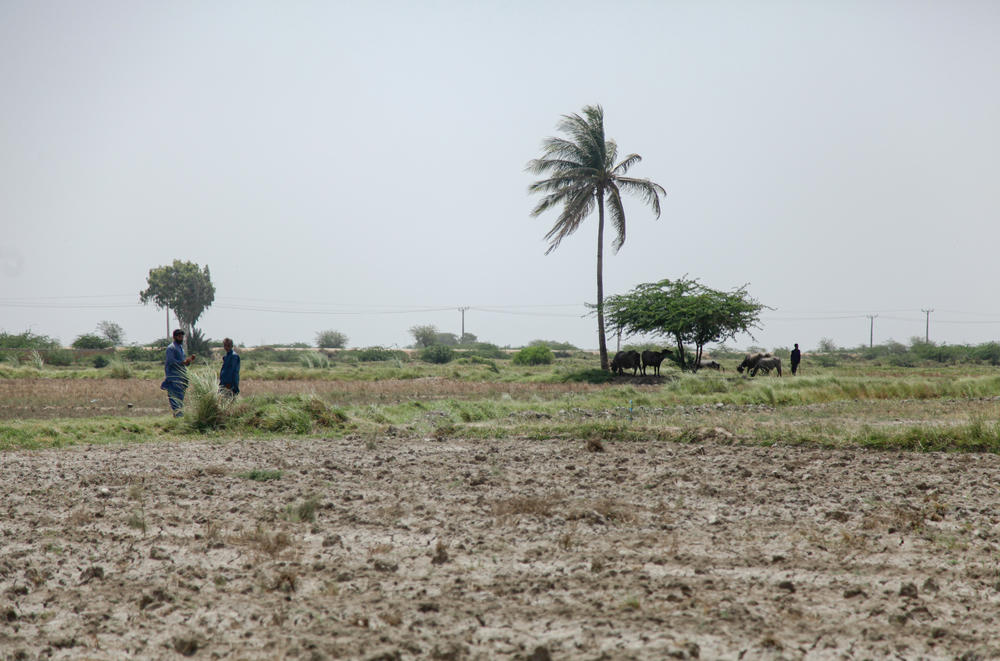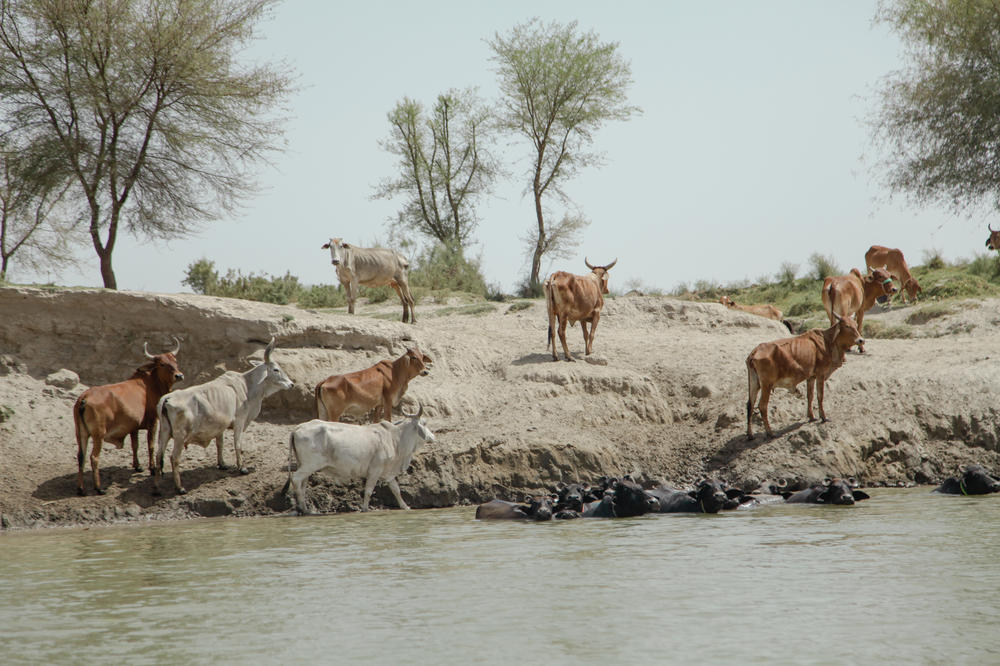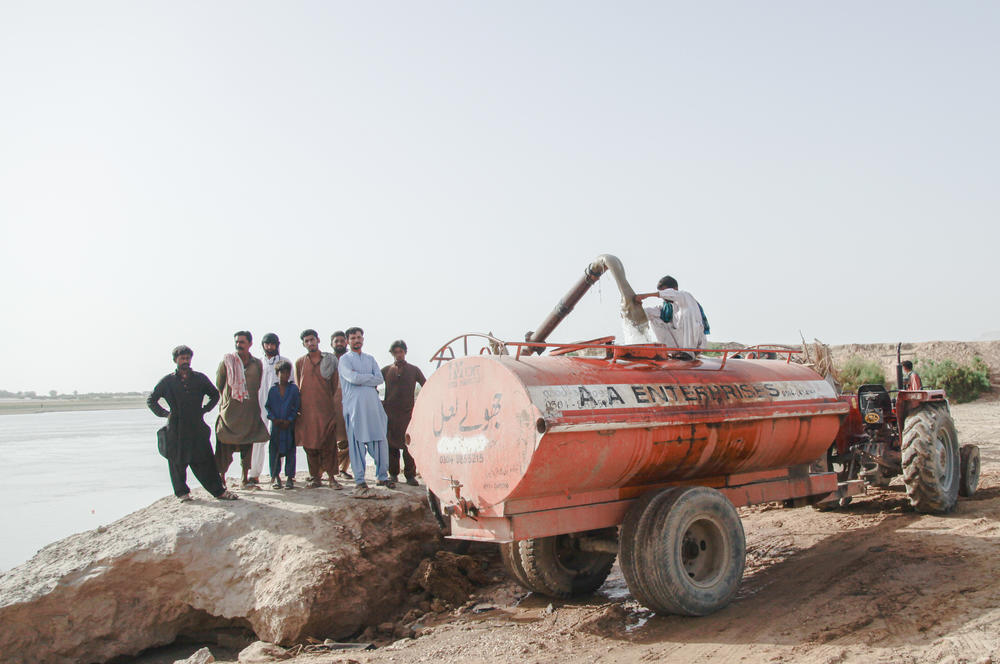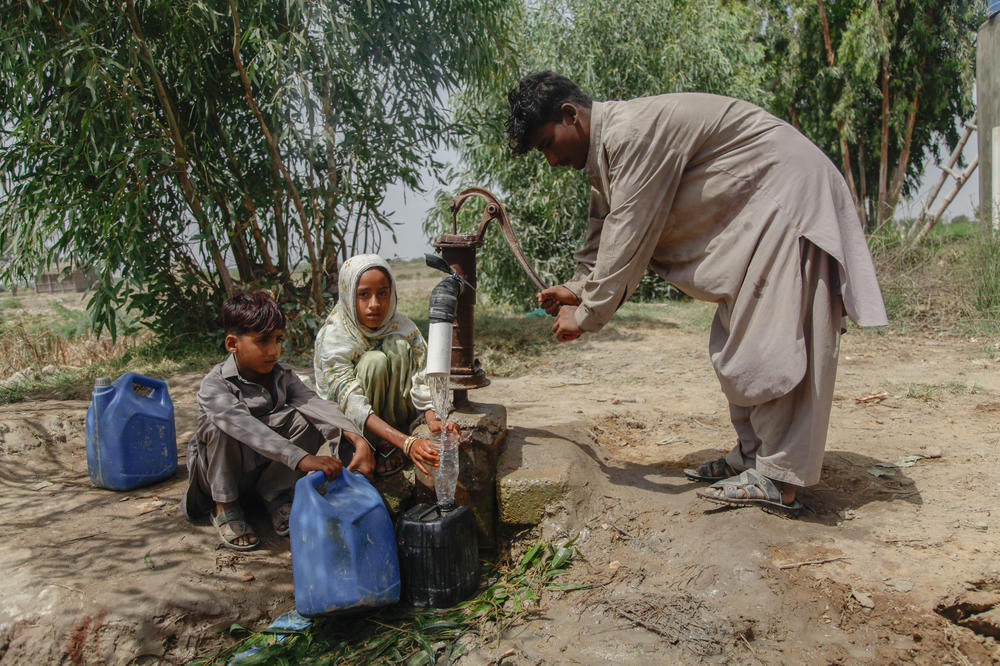Section Branding
Header Content
Too shallow, few fish, unsafe water: Floating down the Indus River in a rubber dinghy
Primary Content
ON THE INDUS RIVER, Pakistan – Pakistanis call the Indus the Father of the Rivers, the Blue Water, the Lion River. Ancient civilizations thrived around it. Shrines to Sufi and Hindu saints dot its banks. And its waters irrigate the crops that feed Pakistan's 220 million people.
Yet the Indus is suffering. Parts of the river are drying up. Wealthy landowners are diverting its waters to irrigate their own crops, leaving little water for small farmers. And the river has become a dumping ground for pollutants.
That intrigued Pakistani filmmaker Wajahat Malik. He began wondering if there was a disconnect between the Pakistani people and the Indus. How could they allow this to happen to their mighty river?
"Especially for the urban population, the river is something that is [far] away," he says. "I don't think people can relate to the river," he says.
So in March, he pulled together an expedition to travel down the nearly 2,000-mile Indus, from where the river begins in Pakistan to where it ends: amid mangrove forests and an arid delta on the Arabian Sea. It was sponsored by a regional hotel chain, the Pakistan Navy and the Sindh government, among others.
"We wanted to document the whole river, the peoples, the cultures, the biodiversity and just whatever comes our way," he says, while chest deep in the Indus on a recent day during his travels.
For over 40 days, Malik's team rafted through gorges of glacial melt, met fishermen who live on boats and got lost in some of the hundreds of miles of irrigation canals that branch off the river. His team was a revolving cast of some ten people: adventurers, environmentalists and a few armed seamen whom the Pakistan Navy lent the expedition, along with two rubber dinghies with outboard motors. They stopped to sleep in guest houses and homes each night.
We joined the expedition for their last day on the Indus, at a river bank near the town of Sehwan famed for a soaring shrine dedicated to one of Pakistan's most important saints, Lal Shahbaz Qalandar. There, men and women come to pray that the saint would help ease their hardship, which seemed to be everywhere along the Indus.
Reduced flow
Afia Salam, an environmentalist on the expedition, distributed bulky life jackets as I ventured onto the rubber dinghy.
"You must," she says firmly.
But as the journey began, the life jackets appeared superfluous. The river was wide but shallow, and the dinghies kept running into sandbanks, forcing the seamen to switch from the left to the right side of the Indus to probe where the water was deeper.
Dams on the Indus and her tributary rivers have long reduced the flow to this lower stretch and destroyed the once-fertile delta at the river's terminus.
The dams have also meant the river has struggled to recover from "blips," says Hassan Abbas, an expert in hydrology and water resources with a passion for the Indus. By "blips," he means this year's dramatic lack of snow melt from the Himalayas and rain to replenish the waters.
It's been one of the driest years in six decades, especially because South Asia experienced a heatwave in April that saw the region leapfrog from the cold of winter into scorching heat. That's something scientists say will happen more frequently as the climate keeps changing.
"Whenever there are a few dry months, the rivers get very little water" because the dams hold back the snow and glacier melt, says Abbas.
That's a problem for the fishermen who depend on the Indus for their livelihoods, like Abdul Rashid Mallah, 32, a man whose last name is literally "fisherman" in his native language, Sindhi. There isn't enough water for the fish to thrive. He lives by a canal that branches off the Indus near the southern city of Hyderabad.
Mallah repairs his net by a canal, and there's a few small fish in his bucket at his feet – his afternoon catch. He makes $2 to $5 a day and considers himself one of the lucky ones, despite his thin frame and gaunt cheeks. "Most of the fishermen are jobless," he says. "They are hungry, they are even starving."
Siphoned water
As the expedition motors on, there's another evident problem impacting the Indus: pipes everywhere, extracting river water with whirring pumps.
Many are controlled by powerful landowners who steal it to irrigate their fields, says Umer Karim, a hydrologist.
He's been able to analyze how much water has been stolen from the Indus by looking at satellite images of the river and its surrounding crops. Areas with large crops further away from the river are likely using siphoned water, he suggests.
"The whole system is under elite capture," Karim says of the water distribution along the Indus. "Encroachments," he says, referring to illegal syphoning of water, "are taking the lion's share."
That affects the flow of water further down the river.
At the tail end of the Indus, there is another canal meant to irrigate the farmlands of the village of Gharo. But the land is cracked. The canals are dusty and shriveled.
A crowd of men prod Jabbar Rind to talk to us. He's a 75-year-old farmer with one eye. "There hasn't been water for three years," he says. He looks for work in the local bazaar for about a dollar a day alongside his adult sons.
But across the road there's a canal lush with water, and rice paddies are green and tender. Rind points to a pipe pumping water from the canal. "Big landowners take that water and they don't release it to us," he says. "Government officials do nothing, they are scared."
Rind's nephew, Elmuddin, says he is afraid that his fellow villagers, at the end of a damaged river, are being abandoned to starve.
"Our animals are dying without water," he says. "Our agriculture is being destroyed without water. The people are going hungry."
The irrigation minister for the southern province of Sindh, Jam Khan Shoro, acknowledges that some of those water extraction pipes were illegal. "Some are approved, some maybe are not approved. Some are sanctioned, some are not," Shoro tells NPR. Khan says they had tried to control water theft in Sindh by banning the digging of new canals that would divert the river's flow.
Shoro says the problem wasn't just agriculture.
It was drinking water – there just wasn't enough in the reservoirs allocated to Sindh for its people. "This is a very dangerous situation," he says.
He says men running water tanker businesses were also siphoning off Indus River water to sell in towns. "We are seeing mushrooming growth in the cities. People are migrating there and they're living in slums with no infrastructure for drinking water."
Selling water to survive
At the banks of the Indus River, we met some of those business owners. Near the town of Sehwan, men waited in line to fill 500-gallon tankers from a pipe extracting water from the Indus.
It was Nazir's turn – like most people in this part of Sindh, he only had one name. His tanker was hitched to his tractor, decorated with flowers and bells that jangled as he moved. Nazir sold the water in nearby Sehwan, where many residents don't have piped water. Demand was strong, he says, amid the recent heatwave.
But the water is only for people who can pay the $6.30 for a tanker, says Nazir. That price is more than two days' wages laboring in a market. So most of his customers are people who run corner stores inside slums, who buy the water to sell off by the gallon.
And yet, the water isn't safe to drink. The Indus River is considered by scientists as one of the most plastic-polluted rivers in the world. It's also a dumping ground for agriculture flows like pesticides and phosphates.
Malik the filmmaker lists the things he saw being poured into the Indus along his journey. "The sewage of the cities and the towns," he says, "and chemical waste."
And, he adds, "we saw all these marble factories pouring all their junk," into the Kabul River, one of the Indus' tributaries.
That's why the expedition is important, says Malik, who hopes to complete his documentary film in the next few months and pitch it to international TV channels like National Geographic or Discovery.
"I want Pakistanis to know that the river is the main artery, it's the lifeline of Pakistan. It gives us bread. It nurtures us, our fields. It is everything to us. And I want to tell them that they should protect rivers, especially Indus."
Copyright 2022 NPR. To see more, visit https://www.npr.org.
